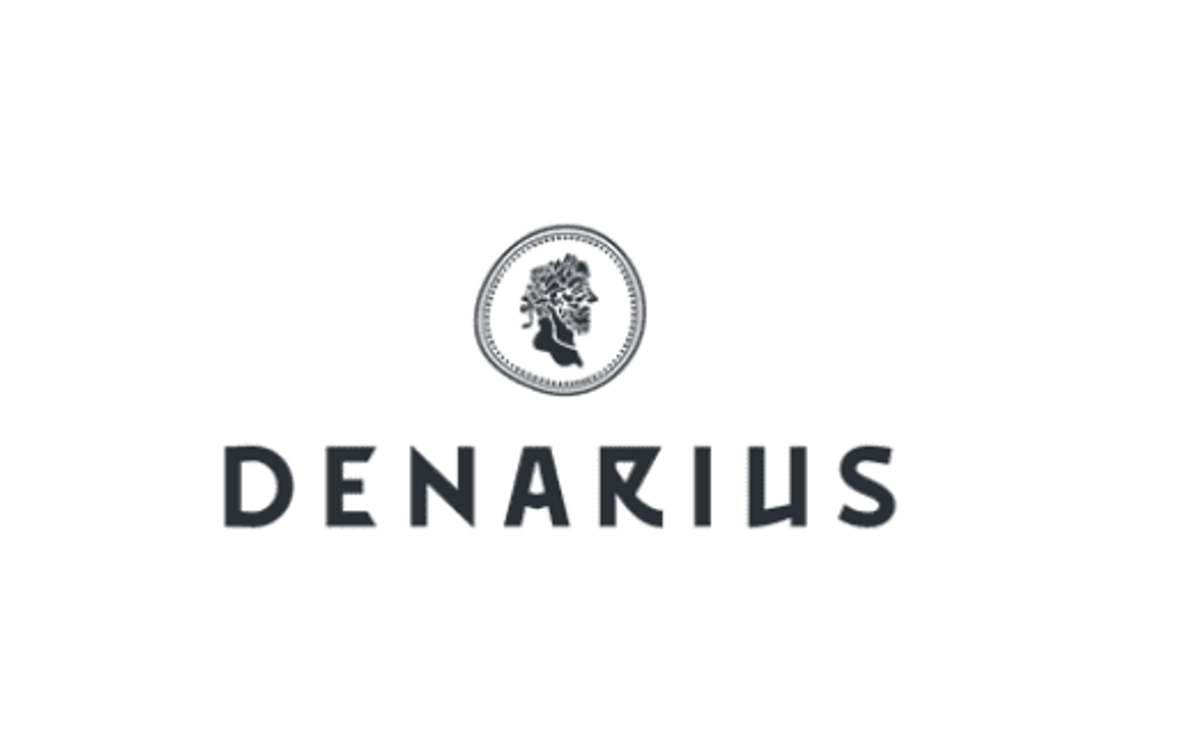
Denarius Metals Corp. ("Denarius" or "the Company") (TSXV: DSLV; OTCQB: DNRSF) announced today that it has received complete assays for nine additional infill drill holes, totaling 2,788 meters, from the ongoing surface diamond drilling program on its polymetallic Lomero-Poyatos Project in southern Spain. To date, Denarius has completed approximately 12,500 meters of drilling, representing 53% of the initial program, in 42 holes with three additional holes in process. A third drill rig was added to the operation on March 2 nd .
Key takeaways from the exploration work carried out at the Lomero-Poyatos Project to date include:
- The new infill drill results confirm that the massive and semi-massive sulfide zones at Lomero-Poyatos are enriched in copper and significantly in zinc and gold and largely validate the thickness and grades of selected drill holes from previous drilling campaigns;
- Current infill drilling has intersected several high-grade, thick intersections over 200 meters strike length close to the bottom of the historical mine in the eastern part of the deposit, demonstrating that mineralization is continuous and open at depth. Infill drilling has also shown that the known deposit is still open at the western end of the permit, where it shows increasing zinc and gold grades in progressively narrower massive to semi-massive intersections;
- Field mapping has identified another shear zone in the southern sector of the permit, in addition to the one discovered in the northern sector. Both shear zones are sub-parallel to the shear zone that hosts the Lomero-Poyatos massive sulfide deposit;
- Denarius has engaged two geophysical consulting firms to conduct helicopter-borne time-domain electromagnetic ("TDEM") and ground-based gravimetric surveys, to determine the extent of mineralization along the strike length and projected extensions of the two newly discovered shear zones, and to define drill targets at depth in the Lomero-Poyatos deposit.
Serafino Iacono, Executive Chairman and CEO of Denarius, commented, "We are very encouraged by these additional drilling results and excited to be moving the exploration program into the geophysical survey phase. Our drilling to date has demonstrated that the Lomero-Poyatos deposit is still open along strike to the west and at depth, and has high-grade gold and polymetallic mineralization. The addition of a third rig to the operation has allowed us to accelerate the drilling program and gives us the flexibility to move a rig to test geophysical targets as soon as results are available. We are confident that our exploration campaign at the Lomero-Poyatos Project will continue to be a key value driver for Denarius as we move forward ".
This is the Company's first diamond drill campaign at its flagship project in Andalusia Region, southern Spain, located within the Iberian Pyrite Belt. The Lomero-Poyatos Project comprises a 100% interest in the P.I. Rubia, License Nº 14.977, that covers the areas occupied by the former Lomero-Poyatos Concessions. The initial surface drilling program at the Lomero-Poyatos Project, totaling 23,500 meters in 81 drill holes, commenced in October 2021 and was designed with three objectives: (1) 9 drill holes to validate selected historical holes drilled within the existing mine, (2) 56 drill holes to carry out infill drilling on a 50 m by 50 m spacing in the lower levels of the mine, and (3) 17 drill holes for step out drilling. To date, 100% of the Validation phase and 57% of the Infill phase have been completed.
The Company has established COVID-19 safety protocols for ensuring a secure work environment for its employees and contractors.
Key Highlights
- The area tested by drilling to date is over 1,000 m along strike and 300 m in vertical depth and will continue to expand as the program progresses. Most of the holes have intercepted massive to semi-massive sulfide mineralization.
- New results from three holes in the ongoing infill drilling phase largely validate the thickness and grades of selected drill holes from previous drilling campaigns as shown by the table below:
| Surface Drilling | ||||||||||
| Hole No. | Phase | From (m) | To (m) | Width (m) | Cu % | Pb % | Zn % | Ag g/t | Au g/t | Min. Type |
| LP21004BIS | Infill | 265.05 | 267.90 | 2.85 | 0.20 | 0.26 | 0.77 | 7.78 | 0.91 | SM |
| TH-1 | Out | 253.00 | 265.00 | 12.00 | 0.23 | 0.89 | 1.34 | 47.02 | 1.13 | SM |
| LM21008BIS | Infill | 272.50 | 281.50 | 9.00 | 0.50 | 0.48 | 2.43 | 45.50 | 3.98 | MS |
| L01-4 | CMR | 193.00 | 198.00 | 5.00 | 0.37 | 0.31 | 0.64 | 10.79 | 1.29 | MS |
| LM22019 | Infill | 215.95 | 218.25 | 2.30 | 0.31 | 0.35 | 2.35 | 38.75 | 3.37 | SM |
| L03-47 | CMR | 152.00 | 154.00 | 2.00 | 0.02 | 0.19 | 0.28 | 9.50 | 0.55 | SM |
MS: Massive sulfides
SM: Semi-massive sulfides
Out: Outokumpu
CMR: Cambridge Mineral Resources
- Drill hole LM21010, along with drill holes LM21007, LM21009 and LM21014 (previously reported), was successful in confirming and better delineating high-grade gold and polymetallic mineralization over 200 meters of strike length close to the bottom of the historical mine in the eastern portion of the deposit, demonstrating that mineralization is continuous and open at depth. The mineralization is characterized by a polymetallic massive sulfide zone with drill intersection widths of between 6.45 m and 17.70 m with maximum grades of 2.51% copper, 3.28% zinc, 0.65% lead, 49.99 g/t silver and 6.07 g/t gold. This zone transitions downwards to a zone of stockwork mineralization at much lower polymetallic grades, while gold grades persist with values up to 1.0 g/t over 2-3 m widths. The grades are higher when the massive sulfide zone is predominant. The widths are drill intersections across the mineralized zones and the true width is estimated to be approximately 80-90% of the drill intersections.
- Drill holes LM21008BIS, LM22019, LM22021 and LM22022, located at the westernmost end of the permit, show an extension of the mineralization to the west from Level 3 to 5 of the historical mine along with a narrowing of the massive to semi-massive sulfide zone that is offset by high-grade zinc and gold mineralization as shown by CuEq grades and In-situ Rock Values (see table below).
- Field mapping has discovered two other shear zones to the south and to the north of the shear zone hosted Lomero-Poyatos deposit, both E-W trending. The southern shear zone contains deformed jasper and sericite-chlorite alteration, which generally occur near the massive to semi-massive polymetallic sulfide zone in the Lomero-Poyatos deposit. The footwall of the Alianza shear zone, which is the northern shear-zone, has also been defined. This shear zone hosts mineralization in the Alianza zone, where there is an old mine shaft, that may continue at depth to the north.
- Denarius has engaged NRG Europa to carry out a high-resolution helicopter-borne time domain electromagnetic ("TDEM") and magnetic survey (Xcite™) on the Lomero-Poyatos Project. Xcite™, when compared to all other technologies available on the market today, is the only system that offers early time (near surface) resolution due to its very fast transmitter pulse turn-off speed, coupled with late time (deep penetrating) performance in a single pulse waveform. The streaming data provides an along-line resolution of ~0.5m with uninterrupted ‘soundings' from near surface to >300m depth of investigation. No other airborne electromagnetic system can offer this level of resolution laterally and vertically. Follow-up of the TDEM anomalies will be carried out by a ground-based high-resolution gravimetric survey that will be run by International Geophysical Technology, S.L. ("IGT").
The following table lists the key intercepts from the ongoing Lomero-Poyatos drilling program received since the Company's previous press release issued on February 23, 2022:
| Hole No. | Phase | From (m) | To (m) | Width (m) | Cu % | Pb % | Zn % | Ag g/t | Au g/t | CuEq (%) | IRV* ($US/t) | Min. Type |
| LM21008BIS | Infill | 272.50 | 281.50 | 9.00 | 0.50 | 0.48 | 2.43 | 45.50 | 3.98 | 4.71 | 368.88 | MS |
| including | 275.00 | 281.50 | 6.50 | 0.66 | 0.61 | 3.32 | 58.77 | 5.21 | 6.20 | 485.36 | MS | |
| LM21016 | Infill | 272.35 | 277.40 | 5.05 | 0.20 | 0.12 | 0.39 | 4.94 | 0.94 | 1.09 | 84.96 | SM |
| LM21010 | Infill | 227.10 | 237.50 | 10.40 | 1.48 | 0.21 | 0.23 | 17.18 | 1.84 | 3.13 | 245.34 | MS |
| including | 227.10 | 235.60 | 8.50 | 1.78 | 0.18 | 0.14 | 19.02 | 2.07 | 3.59 | 281.04 | MS | |
| LM21004BIS | Infill | 265.05 | 267.90 | 2.85 | 0.20 | 0.26 | 0.77 | 7.78 | 0.91 | 1.21 | 96.63 | SM |
| LM22017 | Infill | 238.15 | 244.15 | 6.00 | 0.17 | 0.12 | 0.05 | 11.09 | 1.07 | 1.16 | 87.62 | SM |
| LM22017 | 251.80 | 252.30 | 0.50 | 0.53 | 0.58 | 0.50 | 10.40 | 1.38 | 1.94 | 152.18 | SM | |
| LM22019 | Infill | 215.95 | 218.25 | 2.30 | 0.31 | 0.35 | 2.35 | 38.75 | 3.37 | 3.95 | 308.95 | SM |
| LM22020 | Infill | 307.95 | 321.60 | 13.65 | 0.06 | 0.02 | 0.08 | 2.50 | 0.20 | 0.26 | 20.43 | STK |
| LM22021 | Infill | 219.40 | 220.80 | 1.40 | 0.44 | 1.22 | 1.23 | 50.76 | 4.63 | 5.04 | 394.38 | SM |
| LM22021 | 233.15 | 233.95 | 0.80 | 0.57 | 1.59 | 5.57 | 29.80 | 1.68 | 4.08 | 319.57 | SM | |
| LM22022 | Infill | 186.65 | 187.45 | 0.80 | 0.27 | 2.33 | 6.47 | 81.25 | 3.62 | 6.19 | 484.15 | SM |
*IRV: In-situ Rock Value
Notes:
(1) The holes were drilled at -60 to -85 degrees from the horizontal. Grades are for semi-massive to massive sulfide intersections and some stockwork zones. The width is the sample length and is not necessarily the true width of the intersection. The true width is estimated to be 80-90% of the intersection length. All base and precious metal grades are uncut and are not diluted to a minimum mining width.
(2) Copper equivalent grade (CuEq %) and In situ Rock Value (IRV) were calculated using prices of US$1,800/oz gold, US$25/oz silver, US$3.55/lb copper, US$1.00/lb zinc and US$0.90/lb lead. No adjustments were made for recovery as the project is at an exploration stage and metallurgical data to allow for estimation of recoveries is not yet available.
(3) MS: massive sulfides; SM: semi-massive sulfides; STW: stockwork.
Please refer also to the attached illustrative maps showing the location of drill holes, a longitudinal section showing intercept locations, a sketch of the location of the main shear-zones and two sections with drill holes LM21010 and drill holes LM21008 BIS to LM22022, respectively.
Qualified Persons Review
Dr. Stewart D. Redwood, PhD, FIMMM, FGS, Senior Consulting Geologist to the Company, is a qualified person as defined by National Instrument 43-101 – Standards of Disclosure or Mineral Projects and prepared or reviewed the preparation of the scientific and technical information in this press release. Verification included a review of the quality assurance and quality control samples, and review of the applicable assay databases and assay certificates.
Quality Assurance and Quality Control
The Lomero-Poyatos samples were prepared and assayed by AGQ Labs (ISO/IEC 17025) at their laboratory in Burguillos, Seville, Spain. Gold was assayed by 30 g fire assay with ICP-OES finish, while silver and base metals were analyzed in a multi-element package by aqua regia digestion and ICP-OES finish. Blank, standard and duplicate samples were routinely inserted and monitored for quality assurance and quality control.
About Denarius
Denarius is a Canadian junior company engaged in the acquisition, exploration, development and eventual operation of mining projects in high-grade districts, with its principal focus on the Lomero-Poyatos Project in Spain and the Guia Antigua Project in Colombia. The Company also owns the Zancudo Project in Colombia which is currently being explored by IAMGOLD Corp. pursuant to an option agreement for the exploration and potential purchase of an interest in the project.
Additional information on Denarius can be found on its website at www.denariusmetals.com and by reviewing its profile on SEDAR at www.sedar.com .
Cautionary Statement on Forward-Looking Information
Neither the TSX Venture Exchange nor its Regulation Services Provider (as that term is defined in the policies of the TSX Venture Exchange) accepts responsibility for the adequacy or accuracy of this release.
This news release contains "forward-looking information", which may include, but is not limited to, statements with respect to anticipated business plans or strategies, including exploration programs, expected exploration results and mineral resource estimates. Often, but not always, forward-looking statements can be identified by the use of words such as "plans", "expects", "is expected", "budget", "scheduled", "estimates", "forecasts", "intends", "anticipates", or "believes" or variations (including negative variations) of such words and phrases, or state that certain actions, events or results "may", "could", "would", "might" or "will" be taken, occur or be achieved. Forward-looking statements involve known and unknown risks, uncertainties and other factors which may cause the actual results, performance or achievements of Denarius to be materially different from any future results, performance or achievements expressed or implied by the forward-looking statements. Factors that could cause actual results to differ materially from those anticipated in these forward-looking statements are described under the caption "Risk Factors" in the Company's Filing Statement dated as of February 18, 2021 which is available for view on SEDAR at www.sedar.com. Forward-looking statements contained herein are made as of the date of this press release and Denarius disclaims, other than as required by law, any obligation to update any forward-looking statements whether as a result of new information, results, future events, circumstances, or if management's estimates or opinions should change, or otherwise. There can be no assurance that forward-looking statements will prove to be accurate, as actual results and future events could differ materially from those anticipated in such statements. Accordingly, the reader is cautioned not to place undue reliance on forward-looking statements.
For Further Information, Contact:
Christopher Haldane
Vice President, Investor Relations
(416) 360-4653
investors@denariusmetals.com
Attachment 1 – Drill hole location map
https://www.globenewswire.com/NewsRoom/AttachmentNg/300dc318-c880-4726-a62b-283a0d9739fd
Attachment 2 – 3D Longitudinal section showing intercept locations
https://www.globenewswire.com/NewsRoom/AttachmentNg/7bb62efc-958e-439c-a273-4700d4648e73
Attachment 3 – Shear-zones and old mines location map
https://www.globenewswire.com/NewsRoom/AttachmentNg/a3e166f7-be4d-400f-8667-d0ea92aef913
Attachment 4 – 3D Cross section for Hole LM22010 showing the high-grade gold and polymetallic mineralization zone outlined close to the bottom of the historical mine
https://www.globenewswire.com/NewsRoom/AttachmentNg/433a0287-cbb7-418d-a7e8-4579ee69d97f
Attachment 5 – 3D Cross section for holes LM22017-19-21-22 showing an extension of the mineralization to the west for levels 3 to 5 of the historical mine
https://www.globenewswire.com/NewsRoom/AttachmentNg/a37bf66f-44ef-4be7-b11d-2d1228c2316a






